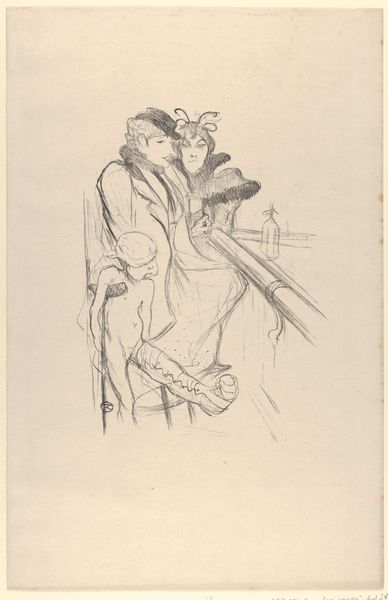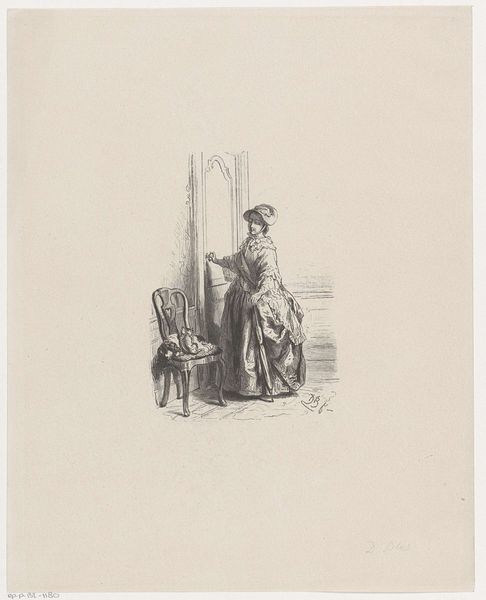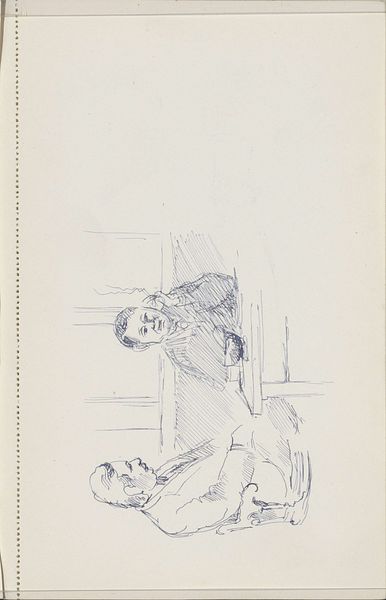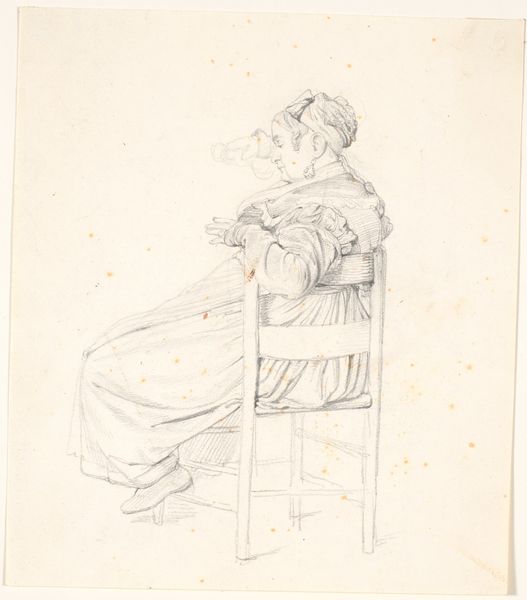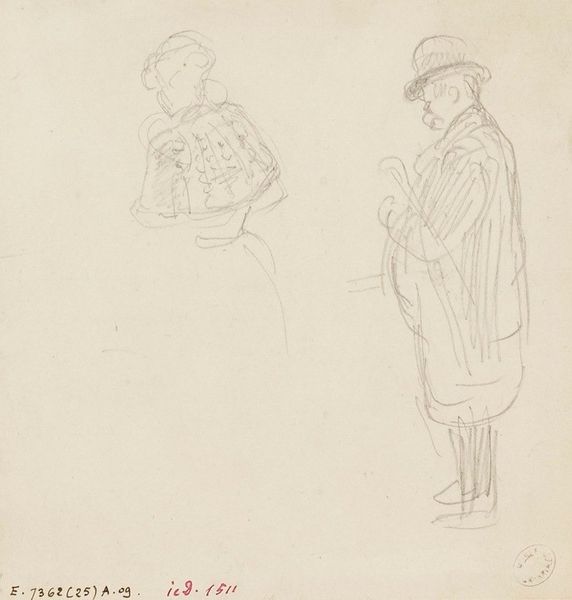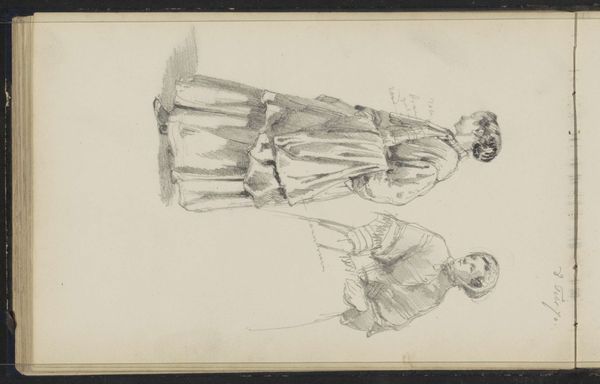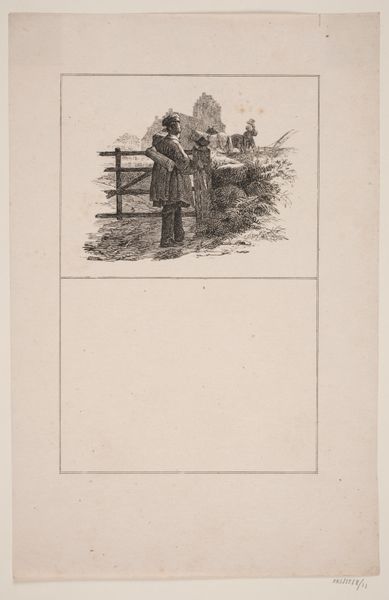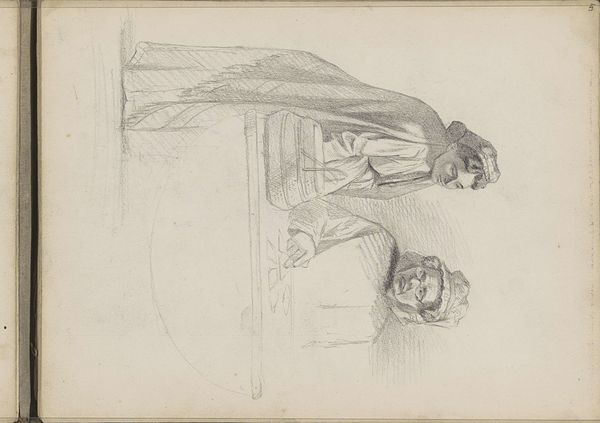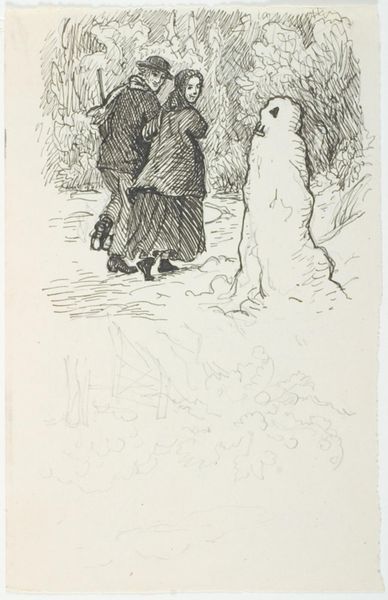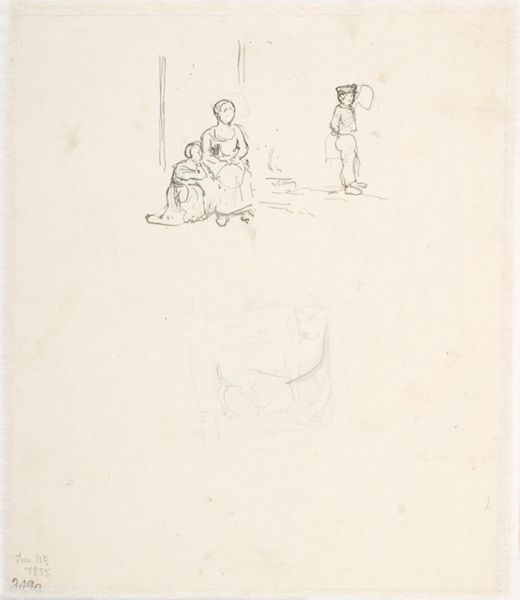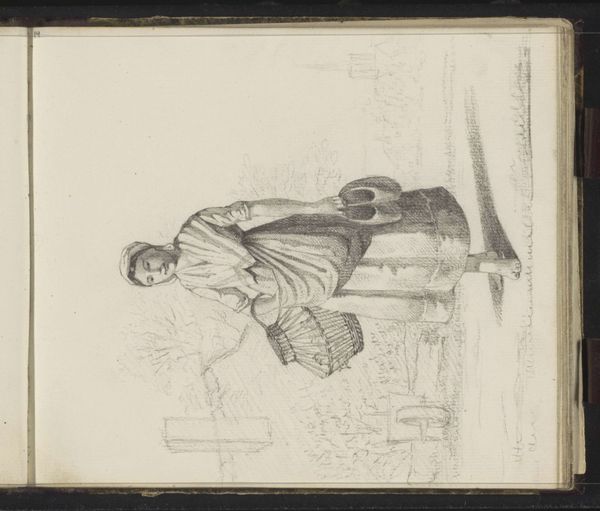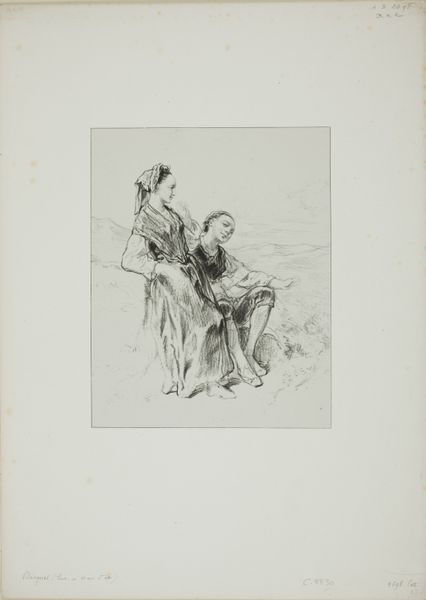
Dimensions: height 367 mm, width 273 mm
Copyright: Rijks Museum: Open Domain
Curator: Welcome! Today, we’ll be discussing Heinrich M. Krabbé's drawing, "Militair en vrouw nemen afscheid," which translates to "Soldier and Woman Bidding Farewell." It's currently housed at the Rijksmuseum and dates to before 1898. Editor: My first impression is melancholy, a quiet sadness pervades the scene. It is very subtly rendered, focusing on gesture. The small scale, the stark simplicity of the lines... all seem to enhance the sense of intimate sorrow. Curator: The composition, limited to ink on paper, echoes the stark realities often accompanying military service. Notice how Krabbé employs economical strokes to convey not just form, but the texture of their garments. Her apron suggests domestic work, while his uniform speaks of state labor and social role. Editor: Absolutely. And look at the almost archetypal imagery here. The soldier, a timeless symbol of duty, contrasted with the woman, equally emblematic of hearth and home. Their embrace speaks volumes about the cultural weight of separation and sacrifice. The hanging lamp is also evocative; does it perhaps represent domestic tranquility, soon to be darkened? Curator: It's fascinating how the artist captures emotion through everyday materials like pen and ink. The paper itself becomes a stage for this quiet drama. Consider, too, the consumption of such imagery. Was it meant for private reflection, or public consumption? Its location in the Rijksmuseum now certainly positions it for public view and shared meaning. Editor: I’m also struck by the man's moustache! Beyond being merely a depiction, it signifies virility and masculine power within the historical context. It suggests, visually, the values that defined an era, a culture. Perhaps she cherishes that image of him… as much as she dreads his absence? Curator: Those visual clues offer so much to ponder about the symbolism of gender, duty, and emotion in Krabbé’s time. By focusing on the materials and means of this simple piece, the deeper layers of meaning emerge, too. Editor: Indeed, this seemingly modest drawing opens into a wealth of human and historical significance. Curator: A powerful piece rendered with very basic material. It makes you appreciate the choices that elevate a scene with profound meaning.
Comments
No comments
Be the first to comment and join the conversation on the ultimate creative platform.
